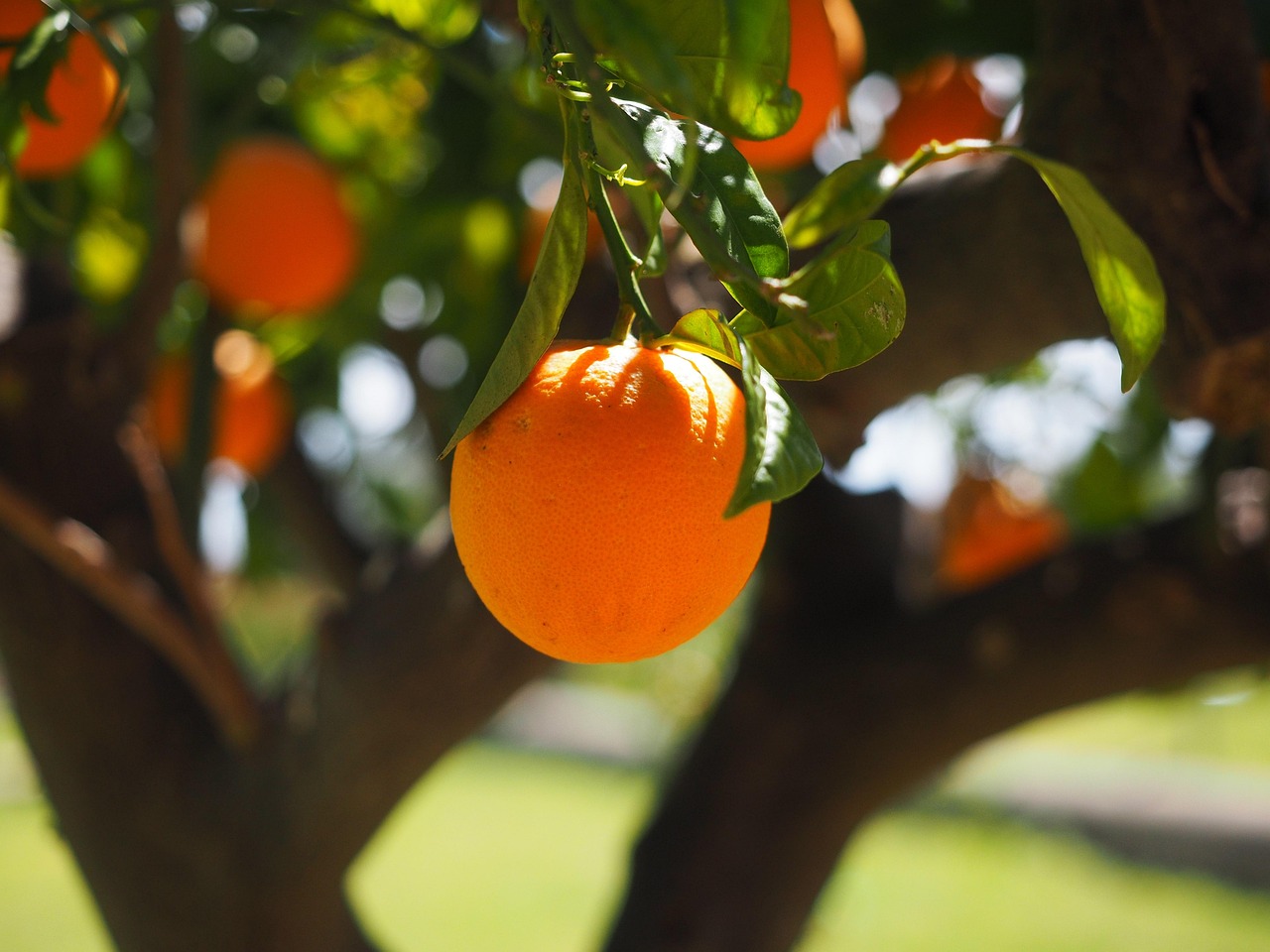Imagine stepping into your garden and being greeted by a vibrant display of orange blossoms. Orange flowering trees bring warmth and energy to any landscape. Their stunning hues can transform your yard into a colorful paradise, making them a popular choice for homeowners and landscapers alike.
These trees not only provide visual appeal but also attract pollinators such as bees and butterflies. With their fragrant flowers, they create an inviting atmosphere. Whether you prefer the bold colors of the flame tree or the delicate blooms of the orange trumpet vine, there is an orange flowering tree to suit every taste and garden style.

Orange flowering trees can thrive in various climates, from tropical to temperate regions. They are known for their resilience and ability to adapt to different soil types. Choosing the right tree for your yard involves understanding its growth habits, maintenance needs, and the specific conditions in your area.
Types of Orange Flowering Trees
When selecting an orange flowering tree, it helps to know the various types available. Below is a list of some popular choices:
- Flame Tree (Delonix regia): Known for its vibrant orange-red flowers, this tree provides a stunning canopy of shade.
- Orange Trumpet Vine (Campsis radicans): This climbing vine produces trumpet-shaped flowers that attract hummingbirds.
- Royal Poinciana (Delonix regia): Often referred to as the flamboyant tree, it offers a spectacular display of orange flowers in summer.
- Coral Tree (Erythrina spp.): With its striking coral-red to orange flowers, it is a favorite among gardeners looking for unique blooms.
- Butterfly Tree (Buddleja davidii): While primarily known for its purple flowers, certain varieties feature orange blooms, attracting butterflies.
Each of these trees has unique characteristics that make them suitable for different landscapes and purposes. Understanding their specific needs will help you make an informed decision when selecting the perfect tree for your yard.
Growing Conditions for Orange Flowering Trees
Before planting an orange flowering tree, it is essential to consider its growing conditions. These trees generally prefer well-drained soil and full sunlight. However, some species have specific requirements that must be met to thrive. Here are some key factors to consider:
| Tree Type | Sunlight Requirements | Soil Type | Water Needs |
|---|---|---|---|
| Flame Tree | Full Sun | Well-drained | Moderate |
| Orange Trumpet Vine | Full Sun to Partial Shade | Well-drained | Low |
| Royal Poinciana | Full Sun | Sandy or Loamy | Moderate |
| Coral Tree | Full Sun | Well-drained | Moderate |
| Butterfly Tree | Full Sun | Well-drained | Low to Moderate |
The above table illustrates the general conditions required for each type of tree. Remember that while these trees can be quite forgiving, providing optimal conditions will ensure they flourish and produce abundant blooms.
Caring for your orange flowering trees includes periodic pruning, watering during dry spells, and monitoring for pests. Engaging in regular maintenance will help you enjoy their beauty for years to come.
The next sections will delve deeper into the benefits of orange flowering trees and how to incorporate them into your landscape design effectively.
Benefits of Orange Flowering Trees

Incorporating orange flowering trees into your landscape offers numerous advantages. These trees not only enhance the aesthetic appeal of your yard but also provide ecological benefits and practical uses. Here are some key benefits to consider:
- Vibrant Aesthetic Appeal: The striking orange blooms create a visually stunning focal point in any garden.
- Wildlife Attraction: These trees attract various pollinators, such as bees and butterflies, supporting local ecosystems.
- Shade and Cooling: Many orange flowering trees have broad canopies that provide shade, helping to cool outdoor spaces.
- Fragrance: Some varieties emit delightful fragrances, enhancing the sensory experience of your garden.
- Low Maintenance: Many species are relatively easy to care for, requiring minimal pruning and watering once established.
These benefits make orange flowering trees an excellent choice for homeowners looking to enhance their outdoor living spaces while contributing positively to the environment.
Designing Your Landscape with Orange Flowering Trees

When planning your landscape design, orange flowering trees can be strategically placed to maximize their impact. Here are some design tips to effectively incorporate these vibrant trees into your yard:
1. Focal Points
Positioning an orange flowering tree as a focal point can draw attention and create a stunning centerpiece. Consider planting it near an entryway, patio, or garden path for maximum visibility.
2. Group Planting
Planting multiple orange flowering trees together can create a dramatic effect. Choose different species for variation in color and texture, which will add depth to your landscape.
3. Layering with Other Plants
To create a lush garden, layer orange flowering trees with lower shrubs and perennial flowers. This will add dimension and ensure a continuous display of color throughout different seasons.
4. Seasonal Interest
Consider selecting species that bloom at different times throughout the year. By doing so, you can enjoy vibrant colors and fragrances throughout the growing season.
Maintenance Tips for Orange Flowering Trees
<pTo keep your orange flowering trees healthy and thriving, proper maintenance is crucial. Here are some essential tips:
- Regular Watering: Water young trees deeply during dry spells. Once established, they typically require less frequent watering.
- Pruning: Prune during the dormant season to maintain shape and remove any dead or diseased branches.
- Pest Management: Monitor for pests such as aphids or scale insects. Use organic pesticides if necessary, following the product instructions carefully.
- Fertilization: Apply a balanced fertilizer in early spring to promote healthy growth and abundant blooms.
- Mulching: Apply a layer of mulch around the base of the tree to retain moisture and suppress weeds.
Following these maintenance tips will help ensure that your orange flowering trees remain vibrant and healthy, providing beauty and enjoyment for years to come.
Popular Varieties of Orange Flowering Trees
Different species of orange flowering trees offer unique characteristics and beauty. Familiarizing yourself with these varieties can aid in making the right choice for your landscape:

- Flame Tree (Delonix regia): Known for its large, bright orange flowers and fern-like leaves, ideal for tropical climates.
- Crape Myrtle (Lagerstroemia indica): Offers vibrant orange flowers in summer, along with beautiful fall foliage.
- Poinciana (Delonix regia): This tree can grow up to 40 feet tall and is known for its striking summer blooms.
- Golden Shower Tree (Cassia fistula): While primarily yellow, some varieties produce beautiful orange flowers that stand out in any landscape.
Understanding the unique traits of these varieties will help you select the best options that fit your design preferences and environmental conditions.
Seasonal Considerations for Orange Flowering Trees
When planning to plant orange flowering trees, understanding the seasonal variations in their growth and blooming cycles is essential. These trees can offer different visual experiences throughout the year, depending on the species and local climate conditions. Below are some key considerations regarding the seasonal behavior of orange flowering trees:
Spring: Awakening Beauty
In spring, many orange flowering trees begin to emerge from dormancy. This is when you will start to see buds forming, which will eventually turn into vibrant flowers. Here are some tips for spring care:
- Pruning: Late winter or early spring is an ideal time to prune your trees before they bloom. This encourages healthy growth and shapes the tree.
- Fertilization: Applying a balanced fertilizer in early spring can help promote vigorous growth and abundant blooms throughout the season.
- Watering: Ensure that young trees receive adequate water as they begin to grow. This is particularly crucial if there has been little rainfall.
Summer: A Burst of Color
Summer is the peak season for most orange flowering trees, with their blossoms in full display. Here are some considerations for summer care:
- Regular Watering: During hot months, ensure your trees are well-watered, especially if you experience a dry spell.
- Pest Monitoring: Check for pests such as aphids or beetles that may be attracted to the flowers. Early intervention can prevent infestations.
- Mulching: Applying mulch around the base of trees helps retain moisture and keeps the roots cool during the heat of summer.
Fall: A Transition Period
As summer fades into fall, many orange flowering trees will start to shed their leaves, particularly those that are deciduous. Here’s how to prepare for fall:
- Leaf Cleanup: Rake fallen leaves to prevent disease and pests from overwintering in your garden.
- Watering Needs: While rainfall may increase in fall, continue to monitor soil moisture, especially for young trees.
- Final Fertilization: A late-season application of fertilizer can help strengthen trees before winter dormancy.
winter: Dormancy and Preparation
During winter, many orange flowering trees enter a dormant phase. Although it may seem like they are lifeless, this period is crucial for their growth cycle. Consider the following points:
- Protection from Cold: In colder climates, consider wrapping young trees with burlap or using mulch to protect roots from freezing temperatures.
- Inspecting for Damage: Check for any signs of frost damage on branches and remove any dead or damaged wood.
- Planning for Spring: Use this time to plan your landscape design for spring planting and prepare any necessary gardening tools.
Choosing the Right Location for Planting
The success of your orange flowering trees greatly depends on selecting the right location in your yard. Here are some factors to consider when choosing a planting site:
- Sunlight Exposure: Most orange flowering trees thrive in full sunlight. Ensure they receive at least six hours of direct sunlight each day.
- Space Requirements: Consider the mature size of the tree. Ensure there is enough space for it to grow without interference from buildings or other plants.
- Soil Quality: Conduct a soil test to check pH and nutrient levels. Amend soil as necessary to provide optimal growing conditions.
- Drainage: Avoid low-lying areas where water tends to pool. Good drainage is essential for root health.
Selecting the right location and understanding seasonal care can significantly enhance the beauty and health of your orange flowering trees, allowing them to thrive in your landscape for years to come.
Creating a Harmonious Landscape with Orange Flowering Trees
In addition to the benefits and seasonal considerations discussed, incorporating orange flowering trees into your landscape design can create a harmonious and inviting outdoor space. Here are some additional tips to enhance your garden’s overall appeal:
1. Complementary Plantings
Pair orange flowering trees with plants that offer contrasting colors or textures. Consider the following combinations:
- Purple or Blue Flowers: Flowers like lavender or blue salvia can create a stunning contrast against the vibrant orange blooms.
- Green Foliage: Use shrubs with deep green leaves to provide a lush backdrop for the bright flowers.
- Ground Covers: Low-growing ground covers such as creeping thyme or sedum can help fill in spaces and reduce weeds.
2. Incorporating Hardscapes
Incorporate hardscaping elements such as pathways, patios, or decorative stones to enhance the beauty of your orange flowering trees. Here are some ideas:
- Stone Pathways: Create winding pathways that guide visitors through your garden, allowing them to appreciate the beauty of the trees from different angles.
- Seating Areas: Install benches or seating areas under the shade of your trees, creating a perfect spot for relaxation and enjoyment.
- Decorative Features: Add sculptures, birdbaths, or pots that blend with the theme of your garden and complement the colors of the trees.
3. Seasonal Decor
Consider seasonal decorations that can enhance the beauty of your orange flowering trees:
- Spring Blooms: Use colorful garden stakes or wind chimes to highlight the vibrant flowers as they bloom.
- Summer Themes: Incorporate outdoor lighting to showcase the trees at night, creating a magical atmosphere.
- Autumn Colors: Add pumpkins or fall decorations that blend with the changing foliage for a festive look.
Final Thoughts
Orange flowering trees provide an array of benefits, from their stunning visual appeal to their ability to attract wildlife. With proper selection, care, and landscaping strategies, these trees can significantly enhance the beauty and functionality of your garden. By understanding their seasonal needs and integrating them thoughtfully into your landscape design, you will create a vibrant and harmonious outdoor space.
The joy of gardening goes beyond mere aesthetics; it offers a connection with nature and a sense of accomplishment. As you embark on your journey with orange flowering trees, embrace the creativity and beauty they bring to your yard. Whether you are cultivating a tranquil retreat or a lively gathering space, these trees will undoubtedly set your yard ablaze with color and life.
With the right planning and care, you can ensure that your orange flowering trees will thrive for years to come, filling your garden with beauty and joy through every season.
